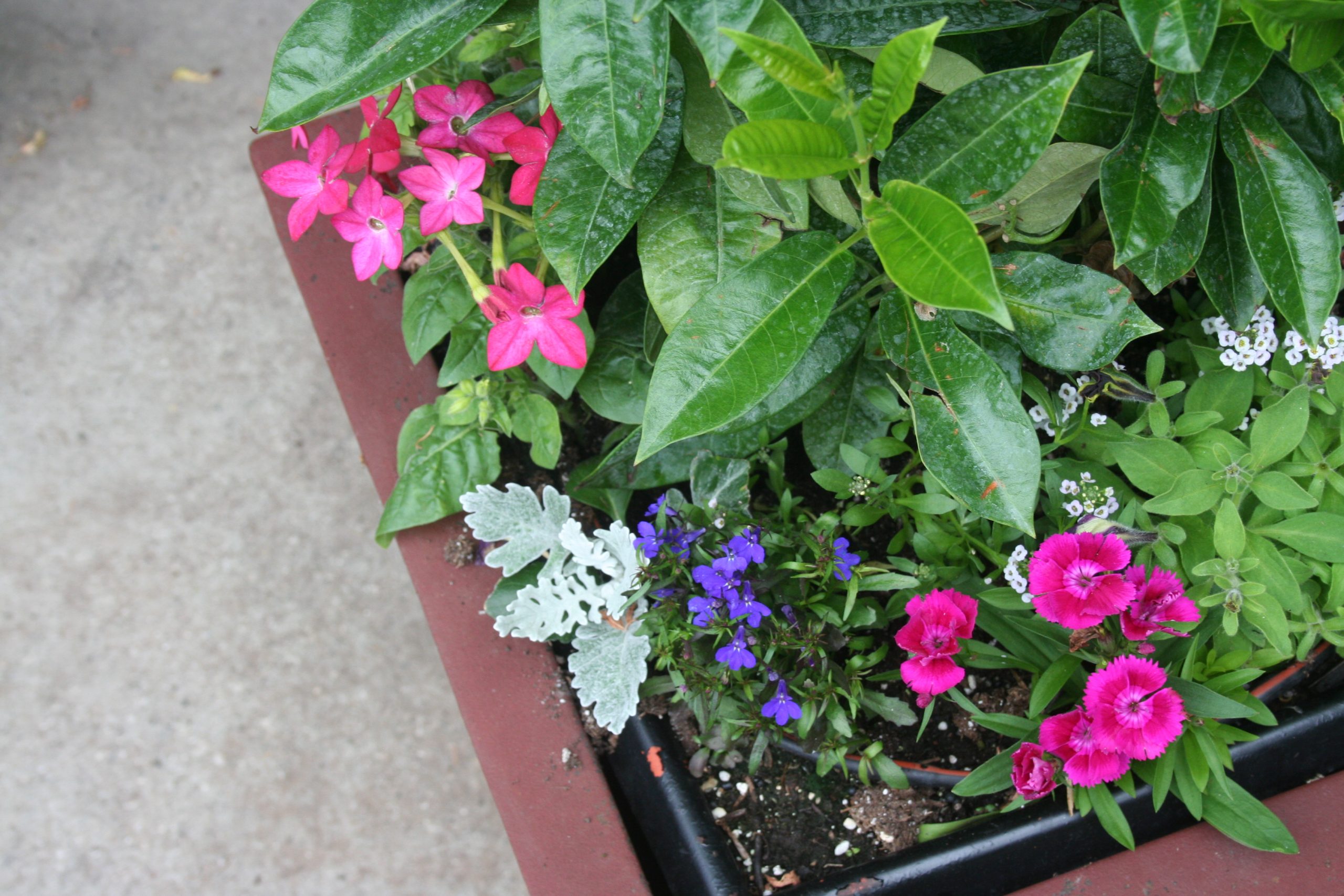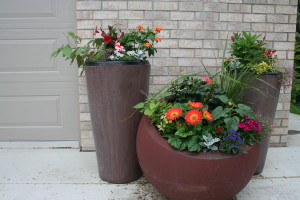
So you’ve chosen your container and put in your plants – now you can sit back and enjoy, right? Well, yes and no. After putting in all that initial time, effort, and money you don’t want to lose any plants through neglect.
Here are few simple things you can do to make sure your pots are looking their best all season long.
1. Watering!
Containers will dry out much faster than your in-ground gardens so you’ll need to make sure they have enough water.
Spring tends to be cool and wet so you typically won’t need to water every day. If your plants aren’t wilting and you’re not sure if you need to water, here’s a quick way to check. Dig your finger a few inches into the potting mix – if it feels soggy or water-logged then your work is done for the day. If the mix only feels slightly damp then it’d be a good idea to water.
Which reminds me, when you’re watering make sure to keep the water coming until you see it draining out of the bottom of the pot. Make sure that the potting mix is evenly moist.
2. Deadheading!
Many flowering plants will flower longer if you remove dead or dying flowers. You can also do this if part of your plant is damaged in someway – removing ugly, dead material looks better and helps keep your plants healthier. Most plants can simply be pinched off but tougher stems might need to be cut with a hand pruner.
Common container plants that need deadheading:
Petunias, daisies, mums, geraniums, impatiens.
Some plants like coleus are grown for their interesting foliage rather than for their flowers and some leafy herbs like basil can also be used in containers. For these plants the flowers are not only less showy than the leaves but they also draw the most energy from the plant, making the leaves loose color. Leafy herbs often get bitter when the plant is allowed to flower.
For these foliage plants deadheading involves removing the flowers altogether. It’s best to pinch the flower buds back as soon as you see them.
3. Relocation!
Sometimes you might notice that your container doesn’t seem to be doing as well as you hoped. Take a look at the plant tags and make sure your plants are getting their ideal amount of light. If they need more or less light, go ahead and move them to a better spot. Over time you’ll get to know what places are best for your containers.
4. Replacement!
If one of you plants isn’t doing well or is damaged in some way go ahead and replace it. Sometimes it just isn’t worth it to nurse a plant back to health, especially when annuals aren’t very expensive. No need to be sentimental – sometimes a gardener must be ruthless.
And on that note, happy gardening!
For more information on container gardening be sure to check out some of our other articles:
Container Gardening: Choosing Your Container
Container Gardening: Design DOs and DON’Ts
Looking for ideas? Check out our Container Garden board on Pinterest: http://www.pinterest.com/petersonlawn/container-gardening/
Want to enjoy some containers but don’t have the time to design your own? Call or email Annika and let her take care of it for you!
Office: 952-252-3301
Email: Annika@PetersonLawn.com
Annika is the horticulturalist at Peterson Lawn Services. Call (952) 929-0422 to schedule a free garden consultation today!
Looking for fun gardening ideas – not sure where to start? Check out our Pinterest page: http://www.pinterest.com/petersonlawn/
Be sure to “Like” us on Facebook: https://www.facebook.com/petersonlawnservices

